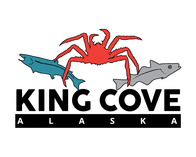Carbon Monoxide Safety
Signs of CO poisoning include:
- Headache
- Nausea
- Fatigue
- Vomiting
- Disorientation
Cooking and heating units that burn fuel and are not properly ventilated, or that malfunction,
can be a source of CO in the home.
WHAT YOU NEED TO KNOW
- Carbon monoxide alarms should be installed within 10 feet of each sleeping room or inside each sleeping room.
- Test CO alarms monthly.
- Follow the instructions on the package to properly install the CO alarm.
- Clear snow and debris from the furnace, dryer, fireplace or oven vents around your home to prevent a CO buildup.
- If the battery is low, replace it.
- Place CO alarms according to the manual instructions.
IF THE ALARM SOUNDS
- Know the sound the CO alarm makes.
- The CO alarm will sound if CO is detected. It will make a different sound if the battery is low and needs replacing.
- If a CO alarm sounds and you feel ill, make sure everyone in the home gets to fresh air and call 9-1-1 immediately.
PREVENT CO POISONING
- When warming a vehicle, move it out of the garage. Do not run a fueled engine indoors.
- During and after a snowstorm, make sure vents for the dryer, furnace, stove & fireplace are clear of snow build-up.
- A gas-powered generator should only be used outdoors. Use in a well ventilated location away from windows, doors and vent openings.
- Gas and charcoal grills can produce CO. Only use them outside.
- Never use your oven or stove to heat your home.
Did you know…?
CO is called the invisible killer because carbon monoxide is an odorless, tasteless and invisible gas.
